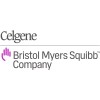
Enhanced Recovery After Surgery Protocal Versus Traditional Care in Laparoscopic Hepatectomy
Liver DiseasesThe purpose of this study is to investigate the clinical value of enhanced recovery after surgery protocal in laparoscopic hepatectomy by assessing its outcomes and hospital stay days comparing with traditional care .

Resolution of Liver Fat in Non-alcoholic Fatty Liver Disease
NAFLDThe major adverse health consequences of obesity occur only when non-alcoholic fatty liver disease (NAFLD) also develops. NAFLD is characterized by abnormal hepatic accumulation of triglycerides and other lipids. The first-line approach to NAFLD management is caloric restriction and weight loss, but these remain difficult to achieve. Little attention has been given to dietary carbohydrate restriction, despite recent reports showing that hepatic de novo lipogenesis, a process that converts dietary carbohydrates into fatty acids in the postprandial state, accounts for approximately 25% of liver triglyceride content in hyperinsulinemic subjects with NAFLD. For comparison, only 15% of the liver triglycerides were derived from dietary fatty acids in patients with NAFLD who had consumed a standardized 30% fat diet for four days before being assessed.

"Hepafast" in Non-alcoholic Fatty Liver Disease (NAFLD)
Non-alcoholic Fatty Liver Disease (NAFLD)ObesityThe purpose of this study is to investigate whether a weight reduction with "Hepafast" in combination with raw food and vegetables for two weeks followed by a meal substitution with "Hepafast" and a calorie restriction in accordance with the Low Glycemic and Insulinemic Diet (LOGI) for 10 weeks is superior regarding improvement of non-alcoholic Fatty Liver Disease (NAFLD) compared to a conventional weight reduction in accordance with the LOGI diet without use of "Hepafast" for 12 weeks.

deLIVER: Direct Acting Antiviral Effects on the Liver
HCV CoinfectionLiver Disease1 moreOpen-label, partially-randomized plasma and liver sampling study to assess hepatitis C virus (HCV) kinetics during treatment with two (Sofosbuvir/Velpatasvir) or three (Sofosbuvir/Velpatasvir/Voxilaprevir) direct acting antivirals (DAAs)

Non Alcoholic Fatty Liver Disease: Nutritional Epidemiology and Lifestyle Medicine
Non Alcoholic Fatty Liver DiseaseLifestyle1 moreThe study is an open-label intervention non pharmacological Cohort Study without control arm in patients with Non Alcoholic Fatty Liver Disease (NAFLD) and in healthy subjects. The intervention in patients with NAFLD is educational, providing personalized suggestions to improve diet and physical activity; the intervention in healthy subjects is educational, providing general suggestions to improve diet and physical activity.

Histological Improvement of NASH With Prebiotic
Non-Alcoholic Fatty Liver DiseaseThis trial will investigate the therapeutic potential of a prebiotic supplement to improve histological parameters of NASH. In a single-blind, placebo controlled, randomized pilot trial will be conduced in individuals with liver biopsy confirmed NASH (Non-alcoholic fatty liver activity score (NAS) ≥ 5). Participants will be randomized to receive oligofructose (8 g/day for 12 weeks and 16g/day for 24 weeks) or isocaloric placebo for 9 months. The primary outcome measure is the change in liver biopsy NAS score and the secondary outcomes include changes in body weight, body composition, glucose tolerance, serum lipids, inflammatory markers, and gut microbiota.

Evaluate the Pharmacokinetics of CC-220 in Subjects With Mild, Moderate, or Severe Hepatic Impairment...
Hepatic ImpairmentHealthy VolunteersThis is a multicenter, open-label study to assess the PK of a single 1-mg oral dose of CC-220 in subjects with mild, moderate, and severe hepatic impairment, and in matched healthy control subjects with normal hepatic function. Degree of hepatic impairment will be determined during the Screening period by the subject's score according to Child-Pugh Classification Criteria

Aspirin for the Treatment of Nonalcoholic Fatty Liver Disease
Nonalcoholic Fatty LiverNonalcoholic SteatohepatitisNonalcoholic fatty liver disease (NAFLD), defined by fatty infiltration of the liver in the absence of excess alcohol consumption, affects an estimated 30% of adults in the United States. A proportion of people with NAFLD will develop progressive, inflammatory nonalcoholic steatohepatitis (NASH), which can progress to liver cirrhosis and liver failure. NAFLD is expected to be the most common indication for liver transplantation by the year 2020. We hypothesize that among adults with NAFLD, aspirin will reduce intrahepatic lipid content, as quantified by 1H magnetic resonance spectroscopy (1H-MRS).

Investigation of Mortality, Morbidity and Risk Factors After Pediatric Liver Transplantation
Liver TransplantationLiver Diseases3 moreThe Department of Organ Transplantation in Memorial Hospitals has started Pediatric Liver Transplantation Program in 2016. As of the end of 2020, we have performed 169 pediatric liver transplantation. The aim of this study is to investigate the overall mortality, morbidity and risk factors for adverse outcomes in pediatric liver transplantation. The patients' records will be retrospectively scanned and the data will be gathered.

Fatty Liver and Obstructive Sleep Apnea
Non-Alcoholic Fatty Liver DiseaseObstructive Sleep ApneaNon-alcoholic fatty liver disease is associated with obstructive sleep apnea. Abnormalities in liver enzymes can improve following continuous positive airway pressure in patients with obstructive sleep apnea. Computerized tomography can be used to quantify fatty liver changes. We hypothesize that continuous positive airway pressure can reduce morphologic fatty liver changes in patients with obstructive sleep apnea and non-alcoholic fatty liver, an that this reduction can be evident using computerized tomography
